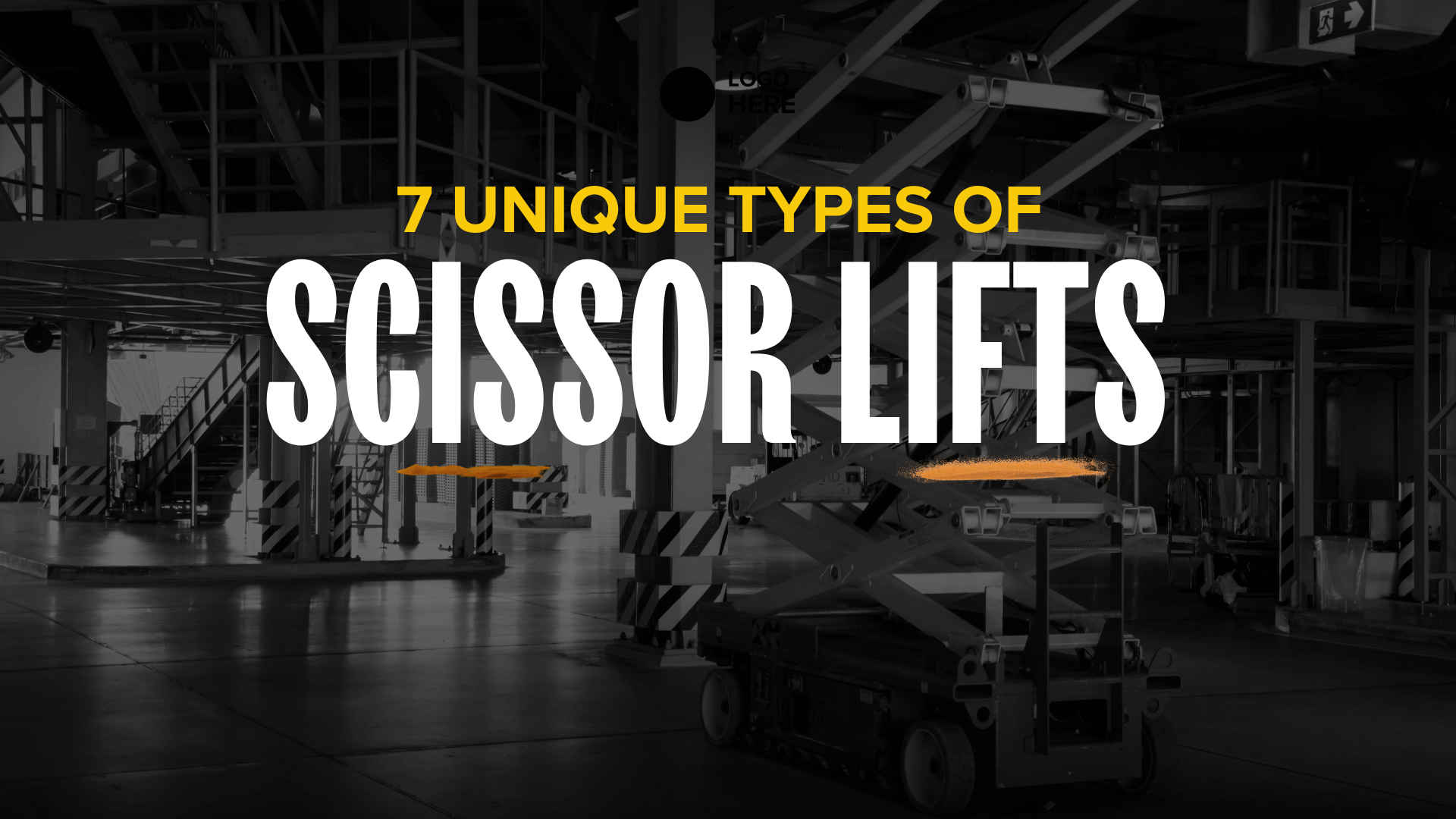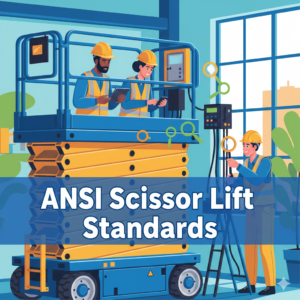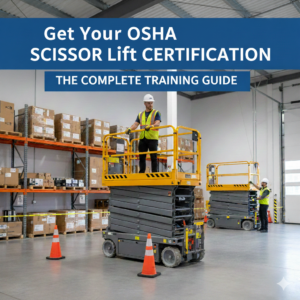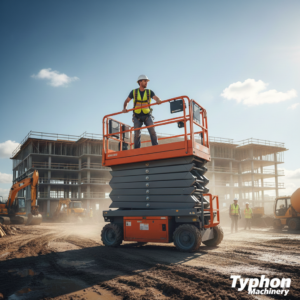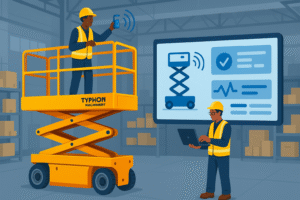In many businesses, scissor lifts convey people and equipment to heights ordinarily requiring scaffolding or perilous ladders. Safely accessing elevated work sites increases production, storage, maintenance, construction, and transportation efficiency. Because this crossing mechanism offers consistent vertical lifting, scissors lifts are helpful for height related tasks.
Although many professionals know about the typical electric scissor lifts used on building sites, unusual variants with special running advantages are usually disregarded. Knowing the differences among these specialist scissor lifts could influence the success of a project.
Find 7 Special Scissor Lifts You Require
Let us understand the prominent 7 types of scissor lifts, along with their purposes, uses, and features. Knowing how each kind tackles industrial challenges helps readers pick the optimal lift solution for their project. Discover the range of scissor lifts now on offer.
Fundamentals of Scissor Lifting
Scissor lifts use the process of crisscross lifting and lowering. Where height access is needed in maintenance, construction, and warehousing operations, their stability and payload capacity make these devices important. Depending on the kind, lifts driven either hydraulically or electrically might soar 20 to 50 feet. Platform size, weight capabilities, and movement possibilities vary among every kind of scissor lift.
Scissor lifts are used by multiple businesses, including those on building projects especially those involving HVAC systems and ceiling fitting. High shelves for inventory control let vendors reach with scissors lifts. These might be used for façade cleaning and sign insertion by building maintenance staff. Every situation emphasizes the best lift option depending on running efficiency: electric for interior use or strong terrain for outdoor operation.
Work site requirements and equipment operations guide the choice of scissor lift best fit. Aisles in warehouses and tight corners call for narrow-width scissor lifts. Though they have greater influence, more varieties might limit room to stop development. Therefore, surface conditions, load capacity, and work footprint decide which sort of scissor lift best fits project objectives and increases productivity and safety.
Thin Scissor Lifts
For confined locations and aisles, warehouses, factories, and retail outlets require narrow-width scissor lifts. These little elevators can operate in close proximity when conventional lifts cannot. Because of their width less than three feet, these lifts fit into small areas and provide ample height for shelf stocking and maintenance.
One great advantage of narrow-width scissor lifts is their mobility. Unlike ordinary varieties, narrow-width lifts may turn suddenly and cover regions without repositioning. This adaptability increases output and minimizes damage to structures and machinery on busy construction sites. A narrow-width lift allows employees of a warehouse with plenty of shelves to reach high shelves without interfering with inventory movement.
Platform size and lifting capability of narrow-width scissor lifts differ from those of conventional types. Though their platforms and weight capability are lower, these machines lift as well as more general equipment. Their relevance in industrial safety applications is strengthened by several variations including automatic leveling systems to provide stability on uneven surfaces.
Apart from its design, narrow-width scissor lifts are very flexible and find use in multi-use spaces. Changing between specialized designs becomes crucial as activities spread throughout sectors like construction and event management. Knowing the specific features of narrow-width scissor lifts helps users to choose the appropriate instrument for accuracy and agility activities in limited locations.
Electric Scissor lifts
Maintenance and construction depend critically on electric scissor lifts. These kinds have little noise and emissions, hence they are perfect for usage inside. Their design satisfies safety criteria for data centers, retail buildings, and warehouses as well as provides access to elevated work sites. Since do not disturb nearby inhabitants, these elevators are perfect for exact work in confined areas.
Sustainability is starting to take front stage in construction. Helping industry goals to reduce carbon emissions and increase energy efficiency are electric scissor lifts. Many electric models can run longer without compromising lift capacity because to better battery technologies. This skill promotes environmental responsibility across project life and helps to lower the use of fossil fuels.
Efficiency of electric scissor lifts depends on many factors. Many versions have great control mechanisms and smooth running that help to lower lifting mishaps. Safety devices like emergency descent and automated braking comfort height workers. Often include telescoping platforms that improve reach without needing larger equipment or tool changes, electric-powered solutions simplify restricted situations thereby increasing work site efficiency.
Scissor Lifts on Rough Terrain
Outdoor hard terrain scissor lifts are for tough environments. Professional lifts are used on construction sites, landscaping work, and other terrain-compromising places. Their design facilitates mobility and accessibility when standard lifting equipment cannot.
On soft ground, gravel, and unstable conditions, tough terrain scissors enhances off-road tire grip. Locked and with a clever balancing mechanism to prevent tilting, this elevator is Usually four-wheel drive, tough terrain vehicles traverse hills and slopes with efficiency. Because of its terrain adaptation, this lift is very essential for installation and maintenance of agricultural equipment.
Choosing the right lift under difficult circumstances controls worker safety and operations. Tough terrain scissor lift operators should consider platform height, weight capacity, and maneuverability among other factors. On site analysis of these elements helps to reduce equipment failure and lifting mistakes as well as productivity.
Given their lifetime, premium tough terrain scissor lifts might help to save money. Using outside tools allows project managers to raise production and operator safety criteria.
Multiple-use Scissor Lifts
With multi-use scissor lifts, which can satisfy numerous job site requirements, versatility has increased. Unlike single-use scissors, multi-use ones might have booms or larger platforms for many purposes. This adaptability allows operators to manage big construction projects and urban upkeep without many tools.
Production and storage adaptable scissor lifts show this. Like boom lifts, these lifts can move large amounts in confined areas. These instruments are used by facility managers for high-up inspections and maintenance free of scaffolds. Its capacity to adapt between traditional lifting and extended reach is essential in small offices.
Choosing multifunctional tools guarantees both excellent performance and exceptional safety. In terms of boom load distribution, especially, weight capacity influences safety. Additionally important is if a scissor lift is suitable for interior sites where electric battery power is cleaner than gas engines. Project requirements will define whether the lift can negotiate sites with size limits.
Knowing the benefits of multi-use scissor lifts facilitates the equipment selection for both temporary and permanent usage. Its adaptability to many environments helps production in the hectic corporate environment of today to avoid equipment changeover downtime.
Compact Scissor Lifts
Compact scissor lifts take up little room and are portable, making them very useful. They are perfect for warehouses, retail spaces, and public building maintenance because to their small footprint and mobility throughout confined work areas. These lifts are an excellent solution when larger ones prove difficult to operate since they allow operators to access low-level areas safely and securely.
Though their design is sleeker, little scissor lifts offer great lifting power. With less floor area, most variations may reach 20-foot working heights. When space is restricted in urban development or facility upgrades, this feature is very helpful. Their modest weight helps them to be agile and lets them be used on places unfit for bigger equipment.
Many of the uses for compact scissor lifts are those of larger ones. Typically, they feature platforms for a small team and their tools and supplies. Automobile brakes and guardrails protect people. Many models provide battery-operated or electric options, which encourage modern sustainability and help to lower pollution in small spaces.
Low-level access elevators added to small machinery enhance its versatility. Low-level access choices allow fast acceleration of work without sacrificing efficiency or stability. This qualifies them for electrical installations where exact placement is required but space is restricted and for routine maintenance checks. In restricted spaces, small scissor lifts sufficiently meet height requirements without endangering operational capacity or safety.
Lifting Pneumatic Scissors
Pneumatic scissors drive compressed air. This approach maximize vertical movement and lowers power usage. Good locations for electric versions are those either poorly ventilated or combustible. These lifts find use in production and storage, where safety and adaptability are very important.
Portability of pneumatic scissor lifts is one of its benefits. These scissor lifts may be moved fast and put up without prior planning on construction sites. Lightweight designs of regular trucks help to improve operating efficiency. Especially in areas without constant electricity, pneumatic systems are adaptable enough for both indoor and outdoor activities. Expert heavy-duty scissors lift operators appreciate this.
Safety aspects of pneumatic scissor lifts increase their use value. Among many kinds are overload prevention and pressure release valves for regulated descent. Automatic shutdown systems protect workers from hazards should pressure drop below safe levels. Thanks to these safety enhancements, pneumatic lifts are reasonably affordable for worker protection and diverse equipment application.
In essence, pneumatic scissor lifts satisfy industrial needs. Compressed air technology offers improved safety measures particular to this kind of scissor lift, hence improving mobility and application versatility. Knowing these purposes guides building experts and facility managers in selecting tools for best performance under various working environments.
Role of Customized Scissor Lifts
Customizable scissor lifts may be made for many different businesses and applications. These modifications could call for height, load capacity, platform size, even tool storage or safety aspects. By matching tools to their demands, operators may optimize work site output.
Sometimes construction, maintenance, and production need specialized designs because to their inherent difficulties. A construction company working on high-rise structures may require a scissor lift with increased height capabilities and a larger platform for HVAC installation. Portable scissor lifts for overhead lighting and products storage are choices available to warehouse facility managers. Customizable models provide adaptability for several contexts.
Specialized scissor lifts greatly output. Customizing helps teams run quicker by lowering equipment and process downtime. By arming operators for specific tasks and preventing equipment-related errors, customizing solutions also improves performance and safety.
At last, flexible scissor lifts let several sectors enhance the output of projects. Investing in lift alternatives that fit certain job requirements—such as increased stability or compact design—allows companies to enhance safety and efficiency.
Finally, Choosing the Proper Scissor Lift
Finally, this paper has detailed seven scissor lifts with various purposes for many sectors. The purposes and characteristics of the narrow-width, electric, difficult terrain, multi-use, small, pneumatic, customized scissor lifts were discussed. To pick the appropriate model, contractors, site managers, and industrial personnel have to grasp these different characteristics.
Think through running requirements and situations before selecting a scissor lift. Examining market opportunities helps people increase safety and efficiency. A more informed approach might help to choose tools for project and job site requirements.

